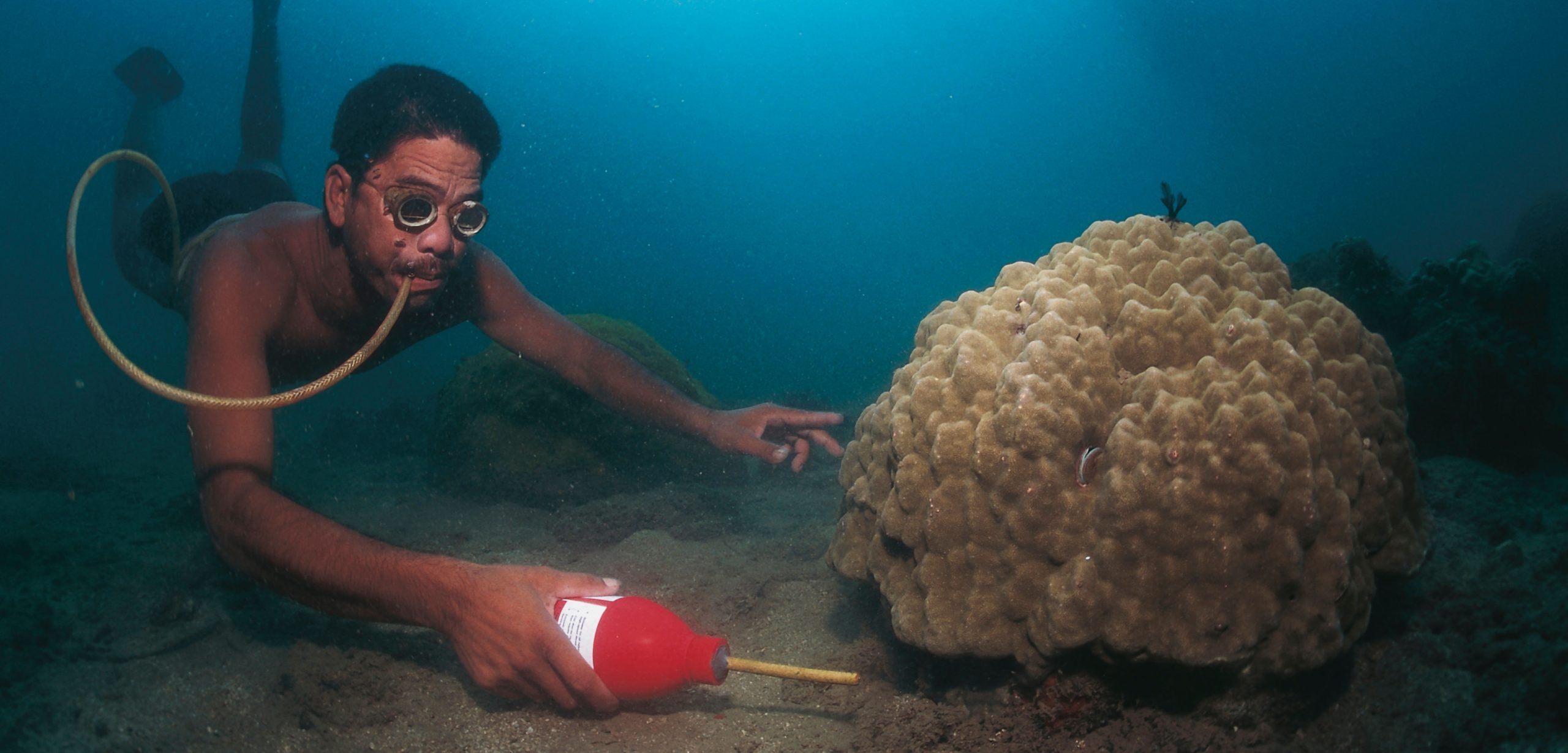Fishing With Cyanide
A small study finds US retailers are selling fish caught using the illegal technique.
Article body copy
“Cyanide fishing” is one of the most destructive techniques used for catching live fish. In this practice—which is illegal in many countries—fishers squirt concentrated sodium cyanide onto reefs to stun fish and scoop them up for the aquarium trade or the live food fish market. But cyanide is indiscriminate: it often kills the fish, and can kill corals and other reef organisms in the process. This makes new research suggesting that half of the vibrant saltwater fish sold in US pet stores are captured with this harmful method particularly distressing.
Cyanide fishing “is horrendous, and it has been going on for far too long,” says Rene Umberger, director of the advocacy organization For the Fishes, who was involved in the new research.
Last week, Umberger and her colleague Craig Downs, executive director of the nonprofit Haereticus Environmental Laboratory, presented their research, which was not peer reviewed, at the International Coral Reef Symposium in Honolulu, Hawai‘i.
In their presentation, Umberger and Downs explained how they bought fish from retailers in five US states. Of the 89 fish they purchased, just over half tested positive for cyanide exposure, including 13 of the 16 green chromis tested—a species previously not thought to be frequently caught with cyanide. They also found that 57 percent of blue tangs tested positive for cyanide exposure—a troubling finding as some scientists fear that the movie Finding Dory will increase the demand for these fish, which can’t be bred in captivity. While a larger study is needed to verify the accuracy and broad applicability of the results, these early findings are making waves in the scientific community.
“There isn’t anybody, any scientist, that would support cyanide fishing,” says Brian Tissot, a fish ecologist at Humboldt State University who is not affiliated with the new research. But although it is well known that this kind of fishing occurs, few studies have been conducted to quantify its prevalence. There’s a simple reason for that, he says: “It’s not the easiest thing to investigate.”
Until recently, researchers needed sizable tissue samples to detect cyanide exposure, which meant killing the fish being tested. But in 2012, a new method that measures thiocyanate—a byproduct of cyanide detoxification that fish excrete in their urine—was developed. “This new approach was a major breakthrough because it is noninvasive and nondestructive,” says Umberger.
Working with this new method, Umberger and Downs went to pet stores and bought 89 fish from 15 different species. They tried to buy fish that had just arrived in shipments to the store, to minimize the amount of time that may have elapsed since possible cyanide exposure. Each fish was then placed in manufactured seawater, where it was allowed to swim and pee for 24 hours. Water samples were then collected and sent to an independent lab for thiocyanate testing.
In the end, they found that a majority of the fish had been caught using cyanide.
But, as with all new methods, there are still some kinks to be worked out, and the results should be accepted with caution.
Umberger and Downs, for instance, could not determine when the fish were exposed to cyanide, or what concentration of cyanide they were exposed to, because there’s no test to give those sorts of quantitative answers. Downs has done some preliminary work toward that end, exposing fish to cyanide and tracking their thiocyanate production, but the research is still far from able to quantify the relationship between thiocyanate excretion and cyanide exposure.
Downs’ studies also found another potential complication: fish exposed to high enough doses of cyanide also excrete cyanide in its unaltered form. That means that cyanide-caught fish could theoretically “contaminate” legally caught ones if kept in the same water during processing or shipping. Certain kinds of mining also leech cyanide into the seawater through runoff, which could cause fish to test positive even though they were not collected using the chemical. It is possible, then, that some of the fish falsely appeared to have been caught with cyanide.
On the other hand, if there was a long enough delay between capture and purchase, then fish could have processed and excreted all the cyanide before reaching Downs’ lab. So, some of the fish could have falsely appeared negative for cyanide exposure.
In other words: pinpointing exactly what percentage of aquarium fish being sold in the United States have been collected using cyanide is a bit messy. “The way to clean it up is to screen at the port of entry,” says Downs.
But even if the 50 percent rate is off in either direction, the result is unsettling, says Andrew Rhyne, a marine biologist at Rodger Williams University who has been studying the aquarium trade for years. “Does it matter if 10 percent of the fish are caught with cyanide or 90 percent?” he asks. “Shouldn’t the goal be no fish caught with cyanide?”
Umberger and Downs hope their study, which they are aiming to have peer-reviewed and published this fall, will be the push agencies need to start cracking down on cyanide fishing.
“We want [US] Fish and Wildlife Service, US Customs, and [the US National Oceanic and Atmospheric Administration] to start to set up some sort of program where they’re going to be testing the fish at the ports,” says Umberger. For the Fishes teamed up with the Center for Biological Diversity and the Humane Society of the United States to file a legal petition urging for cyanide testing in March. “We’ve shown that it’s doable.”

